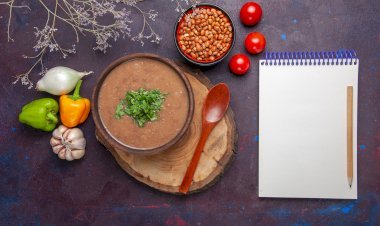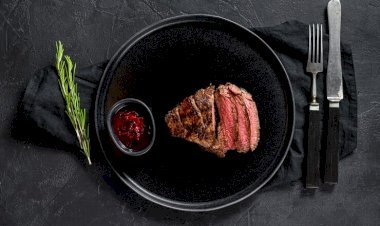Traditional French Breakfast Foods: A Complete Guide to Classic Morning Delights
Discover the charm of traditional French breakfast foods like croissants, baguettes, and café au lait. Learn about their history, regional variations, preparation tips, and how to enjoy authentic French mornings whether at home or in the US.

Breakfast in France is known for its simplicity, exceptional quality, and delicious flavors. Unlike the heavier breakfasts common in some countries, the French prefer a light yet satisfying morning meal focused on fresh bread, flaky buttery pastries, and warm coffee. These foods are not just about taste—they reflect a deep cultural appreciation for fresh, local ingredients and time-honored daily rituals, like stopping by the neighborhood boulangerie (bakery) to pick up the morning’s bread and pastries.
This guide explores the most beloved traditional French breakfast foods, their fascinating history, and the regional variations that add unique flavors across the country. You’ll also find practical tips for preparing these dishes at home and ideas on how to enjoy an authentic French breakfast experience, whether you’re in France or anywhere else in the world.
What Are Traditional French Breakfast Foods?

Image source: i.pinimg.com
A traditional French breakfast is all about simplicity, freshness, and quality. At its heart are fresh breads and pastries, often enjoyed with a warm cup of coffee or hot chocolate. The star of the show is the croissant—a beautifully flaky, buttery pastry made by carefully folding layers of dough and butter to create its signature light texture. Alongside the croissant, pain au chocolat is a beloved treat: a similar pastry but filled with rich dark chocolate.
Another essential element is the baguette—a long, slender loaf known for its crisp crust and soft, airy interior. It is typically sliced and served with unsalted butter and homemade fruit jam, allowing the bread’s flavor to shine.
French breakfasts prioritize quality over quantity. Many French people make daily visits to their local boulangerie (bakery) to pick up fresh bread and pastries baked that morning. To complement these foods, drinks like café au lait—coffee mixed with steamed milk—or a strong espresso are commonly enjoyed. While some may add yogurt, fresh fruit, or cheese, the overall meal remains light, focusing on natural, simple flavors that start the day gently and deliciously.
Popular Pastries: Croissant and Pain au Chocolat

Image source: i.pinimg.com
Croissants are crafted using a traditional French baking method called lamination, where layers of butter are carefully folded into the dough multiple times. This technique creates dozens of delicate, flaky layers that give the croissant its signature airy texture and rich, buttery flavor. Making croissants requires skill and patience, as the dough must rest and chill between folds to develop the perfect balance of crispness and softness.
Pain au chocolat is made using a similar laminated dough but features delicious dark chocolate sticks baked inside, offering a delightful contrast of flaky pastry and smooth chocolate. Both croissants and pain au chocolat are staples of the French breakfast, often enjoyed plain or alongside a steaming cup of coffee.
French bakeries, or boulangeries, take pride in baking these pastries fresh every morning. It’s a common ritual for many to stop by on their way to work or school to pick up a warm croissant or pain au chocolat.
Expert insight: Claire Heitzler, a celebrated French pastry chef, describes the perfect croissant as having a crisp, golden exterior and a soft, airy interior. Achieving this requires careful control of dough temperature and precise handling during the lamination process. (Source: Le Cordon Bleu culinary school publications)
Baguette with Butter and Jam

Image source: i.pinimg.com
The baguette is an iconic symbol of French baking, instantly recognizable by its long, slender shape, crispy crust, and soft, chewy interior. At breakfast, it’s commonly sliced and generously spread with creamy butter and a variety of fruit preserves—favorites include strawberry, apricot, and raspberry jams.
French butter is known for its exceptional quality, often made with traditional methods that focus on natural ingredients and regional dairy standards. While not all butter carries formal certification, many artisanal butters in France come from specific regions famous for their rich, creamy texture and flavor.
This simple yet delicious pairing of fresh baguette, smooth butter, and sweet jam remains a cherished morning ritual in households throughout France. It perfectly balances texture and taste, making breakfast both satisfying and light.
Beverages: Café au Lait and Other Morning Drinks

Image source: i.pinimg.com
Coffee plays a vital role in the traditional French breakfast. The most beloved morning drink is café au lait, which combines strong brewed coffee with steamed milk, resulting in a smooth, creamy beverage that perfectly complements flaky pastries like croissants and pain au chocolat.
Many French people also enjoy espresso, a small but intense shot of coffee served in tiny cups, providing a bold start to the day. During colder months, chocolat chaud (rich hot chocolate) is a popular comforting choice, especially for those who prefer something sweeter and warmer.
While tea is less commonly consumed at breakfast compared to coffee, it remains a welcome alternative for some. Beyond just the drink itself, the French tradition often involves slowly savoring coffee at a local café, perhaps reading the newspaper or engaging in light conversation—underscoring the social and relaxed rhythm of French mornings.
Regional Variations of French Breakfast

Image source: i.pinimg.com
While croissants and baguettes are beloved across France, many regions have their own unique breakfast traditions that reflect local ingredients and cultural influences.
- Brittany: Known for its hearty buckwheat flour, Brittany offers galettes—savory crêpes filled with ingredients like cheese, ham, or eggs. Though often enjoyed at lunch or dinner, lighter versions of galettes can also be part of a traditional Breton breakfast.
- Alsace: Influenced by German culinary traditions, Alsace breakfasts often feature soft, sweet brioche breads alongside freshly baked pretzels (bretzels). These breads provide a richer, slightly sweeter start to the day compared to the classic flaky pastries found elsewhere.
- Provence: Thanks to its Mediterranean climate, Provence emphasizes fresh, seasonal produce. Breakfast here frequently includes fresh fruits like figs or berries, creamy yogurt (often from local goats or sheep), and honey sourced from the region’s lavender fields.
These regional differences highlight the rich diversity of French culinary heritage, showcasing how geography, climate, and local customs shape the morning meal. They also emphasize the French commitment to using fresh, high-quality, and locally sourced ingredients.
How to Make Traditional French Breakfast Foods at Home

Image source: i.pinimg.com
Recreating the classic French breakfast experience at home can be both fun and rewarding, whether you’re a beginner or ready to try more advanced recipes. Here’s a simple guide to get you started:
Easy: Start with a fresh baguette from a good bakery or bakery section. Slice it thickly and spread it generously with high-quality unsalted butter and your favorite fruit jam. This quick and authentic treat captures the heart of a French breakfast without any fuss.
Intermediate: Try making crêpes, thin French pancakes that are surprisingly simple. With just flour, eggs, milk, and butter, you can whip up a batch in under 30 minutes. Fill or top your crêpes with sugar, fresh fruit, Nutella, or honey for a delightful homemade morning treat.
Advanced: Baking croissants or pain au chocolat at home is a rewarding challenge. These flaky, buttery pastries require a technique called lamination, where cold butter is folded repeatedly into the dough to create delicate layers. The process involves multiple chilling and resting steps over several hours or even days, so patience is key. But the fresh, golden croissants you’ll produce make the effort worthwhile.
For the perfect French coffee: Brew a strong coffee or espresso and gently mix it with steamed milk to create café au lait. If you don’t have an espresso machine, a strong drip coffee or French press coffee warmed with steamed or heated milk works well too.
Pro tip: Using European-style butter (which has a higher fat content and richer flavor) and unbleached, high-protein flour can significantly improve the taste and texture of your homemade French pastries and breads, bringing them closer to what you’d find in France.
Cultural Significance of French Breakfast

Image source: i.pinimg.com
French breakfast is much more than just a meal—it reflects a way of life deeply rooted in culture and social habits. Typically, the morning meal is light and quick, designed to prepare for the day ahead rather than to fill up completely. Unlike countries where breakfast is the largest meal, in France, lunch is the main meal of the day.
A daily visit to the boulangerie (bakery) to pick up fresh bread or pastries is a cherished ritual for many French people. Equally important is the moment spent enjoying a coffee and croissant at a local café, which offers a brief pause to connect with others or savor a peaceful start.
This tradition highlights a balance between nutrition and pleasure, focusing on high-quality, fresh, and local ingredients rather than large portions. More than just food, the French breakfast celebrates taste, craftsmanship, and community—a small but meaningful daily ritual that honors both tradition and social connection.
Tips to Enjoy a Traditional French Breakfast in the US

Image source: i.pinimg.com
If you want to savor the authentic taste of a French breakfast without traveling to France, here are some practical tips to bring the experience home or find it locally:
- Visit Local French Bakeries and Cafés: Many cities across the US now have bakeries and cafés specializing in French pastries and breads. Look for places that bake fresh croissants, baguettes, and pain au chocolat daily. These spots often use traditional techniques and ingredients to give you that genuine French flavor.
- Choose Quality Ingredients for Home Baking: If you enjoy baking, try using European-style butter, which typically has a higher fat content and richer taste than regular American butter. Fresh yeast or active dry yeast can help achieve the light, airy texture essential for croissants and brioche. Using unbleached, high-quality flour will also improve your results.
- Make or Order Café au Lait: To complement your pastries, prepare coffee with steamed or heated milk to create a creamy café au lait. If you’re ordering, ask if the café offers this traditional coffee style for the full experience.
- Experiment with Jams and Cheeses: Traditional French breakfasts often include a variety of fruit jams—like strawberry, apricot, or raspberry—and mild cheeses such as Brie or Camembert. Sampling different combinations adds a delicious dimension to your morning meal.
- Embrace a Leisurely Pace: One of the joys of a French breakfast is taking your time. Whether alone or with company, enjoy your meal slowly, perhaps with a good book, music, or conversation. This relaxed approach lets you truly appreciate the flavors and the moment.
By following these tips, you can bring a little slice of French morning tradition into your daily routine, no matter where you live.
Table: Common Traditional French Breakfast Foods and Their Characteristics

Image source: i.pinimg.com
|
Food Item |
Description |
Typical Accompaniments |
|
Croissant |
Buttery, flaky, crescent-shaped pastry made through layered dough technique (lamination). |
Butter, fruit jam, café au lait or espresso |
|
Pain au Chocolat |
Flaky pastry similar to a croissant but filled with rich dark chocolate. |
Coffee, hot chocolate, or café au lait |
|
Baguette |
Classic long, thin French bread with a crisp crust and soft interior. |
Unsalted butter, fruit preserves, or cheese |
|
Café au Lait |
Strong brewed coffee mixed with steamed or hot milk, smooth and creamy. |
Typically served alongside bread or pastries |
|
Crêpes |
Thin, delicate pancakes made from simple batter, often sweet or savory. |
Sugar, Nutella, fresh fruit jams, or lemon and sugar |
|
Madeleines |
Small, soft, shell-shaped sponge cakes with a delicate buttery flavor. |
Usually enjoyed with coffee or tea |
|
Yogurt and Fruit |
Fresh plain or lightly sweetened yogurt served with seasonal fruits or nuts. |
Honey, nuts, or granola |
Popularity of French Breakfast Foods Among US Consumers

Image source: i.pinimg.com
According to a 2025 survey conducted by the Food Insights Institute, which polled 1,000 US consumers with an interest in international cuisine, French breakfast items continue to enjoy significant popularity. Here’s a snapshot of how these classic foods rank among American breakfast lovers:
|
Food Item |
Popularity (% of Respondents) |
|
Café au Lait |
78% |
|
Croissant |
74% |
|
Baguette |
60% |
|
Pain au Chocolat |
55% |
|
Crêpes |
42% |
|
Yogurt and Fruit |
35% |
Note: Percentages reflect respondents who reported enjoying or regularly consuming these items for breakfast.
Why these favorites?
Café au lait leads as the preferred beverage, loved for its smooth and comforting flavor. Croissants follow closely, cherished for their buttery, flaky texture. Baguettes and pain au chocolat also hold strong appeal, while crêpes and yogurt with fruit attract those looking for lighter or more varied options.
While these figures provide insight into trends, individual preferences vary widely, and regional availability influences popularity as well.
History and Origins of French Breakfast Traditions

Image source: i.pinimg.com
French breakfast traditions have developed over centuries, shaped by social, economic, and cultural changes. In earlier rural France, mornings were often simple and practical meals, such as bread with cheese or leftovers from the previous day. However, with the growth of cities and the rise of cafés and boulangeries (bakeries) during the 18th and 19th centuries, fresh bread and pastries became more widely available and affordable. These establishments quickly became important social centers where people could gather to start their day.
Over time, the combination of a light pastry—like a croissant or pain au chocolat—and a cup of coffee evolved into a beloved morning ritual. This tradition reflects the French appreciation for quality, simplicity, and the pleasure of sharing moments with others, blending convenience with culture and community.
Seasonal and Festive Breakfast Items

Image source: i.pinimg.com
French breakfasts beautifully reflect the changing seasons and special celebrations throughout the year. Seasonal ingredients play a key role in adding variety and honoring culinary traditions.
- Epiphany (La Fête des Rois): One of the most famous festive breakfast treats is Galette des Rois (King’s Cake) in northern France, a flaky puff pastry filled with almond cream. In southern regions, families enjoy Brioche des Rois—a sweet, crown-shaped brioche decorated with colorful candied fruits symbolizing a royal crown. This tradition celebrates the arrival of the Three Wise Men and is typically enjoyed throughout January.
- Autumn: As the leaves change, French bakeries often offer chestnut-based pastries and crêpes filled with seasonal fruits like apples, pears, or figs. These seasonal treats highlight the country’s respect for fresh, local produce and the natural rhythms of the year.
These customs showcase the French passion for combining seasonal freshness with cultural heritage, turning breakfast into a celebration of nature’s bounty.
Breakfast Etiquette and Customs

Image source: i.pinimg.com
In France, breakfast is typically a quick and light affair. Many people enjoy it at home or sometimes standing at the counter of their local café, grabbing a fresh pastry and coffee before starting the day. Unlike the leisurely, often elaborate brunches popular in other countries, French breakfasts emphasize simplicity and quality rather than quantity or time spent.
This habit is closely tied to the French daily meal structure, where lunch is the main meal of the day, usually enjoyed with family or colleagues and often lasting longer. Breakfast serves as a gentle start—just enough to awaken the senses and provide energy—allowing the midday meal to be more substantial and social.
Modern Twists on Traditional Breakfast Foods

Image source: i.pinimg.com
In response to changing dietary preferences and increased awareness of food sensitivities, many French bakeries today create modern versions of classic breakfast items. You can now find croissants made with gluten-free flours or vegan alternatives that use plant-based butter and milk substitutes. These innovations allow more people to enjoy the rich flavors and flaky textures of traditional French pastries while honoring dietary needs. This balance of creativity and tradition helps keep French breakfast culture fresh, accessible, and inclusive.
Nutritional Breakdown and Benefits

Image source: i.pinimg.com
Traditional French breakfasts tend to be lighter and smaller in portion size compared to many American breakfasts. A typical croissant contains roughly 230 to 300 calories, mainly from butter and flour, offering a satisfying source of energy without feeling overly heavy. Café au lait—coffee mixed with steamed milk—adds some calories from the milk but generally contains less sugar and fewer calories than many sweetened breakfast beverages like flavored lattes or fruit juices.
By focusing on fresh, high-quality ingredients and smaller servings, French breakfasts support a balanced approach to eating. This lighter start to the day is often balanced by a larger, nutrient-rich lunch and dinner, contributing to an overall healthy eating pattern.
Comparison Table: French vs. American Breakfast Habits

Image source: i.pinimg.com
|
Aspect |
French Breakfast |
American Breakfast |
|
Portion Size |
Typically small and light, focusing on moderation |
Often larger and more filling, with hearty portions |
|
Common Foods |
Fresh bread, buttery pastries (like croissants), coffee |
Cooked items such as eggs, bacon, pancakes, cereals |
|
Typical Beverages |
Café au lait, espresso, hot chocolate |
Coffee, orange juice, milk, and sometimes tea |
|
Time of Eating |
Usually quick, sometimes eaten on-the-go or at a café |
Often more leisurely, with brunch becoming popular |
|
Focus |
Emphasis on freshness, quality ingredients, and simplicity |
Emphasis on variety and calorie-dense, hearty meals |
Additional Notes:
- French breakfasts often reflect cultural habits valuing quality and efficiency, usually before heading to work or school.
- American breakfasts vary widely by region and personal preference, ranging from quick grab-and-go options to large weekend brunches.
Popular French Breakfast Spots in the US

Image source: i.pinimg.com
If you’re craving an authentic French breakfast without leaving the US, several cities boast excellent bakeries and cafés that bring a true taste of France to your morning routine:
- New York City: Balthazar is a beloved French brasserie famous for its buttery croissants and classic pastries, while Ladurée—originally from Paris—is renowned worldwide for its delicate macarons and flaky viennoiseries.
- San Francisco: Trouble Coffee and Miette Bakery serve freshly baked baguettes and buttery croissants alongside rich café au lait, offering cozy spots to enjoy a traditional French breakfast.
- Chicago: Vanille Patisserie delights with a wide selection of authentic French breads, pastries, and desserts crafted by skilled French-trained bakers.
Exploring these establishments lets you savor authentic French flavors and morning rituals—perfect for indulging in a little French culture no matter where you live.
Read More: If you're curious about how other places indulge in morning meals or all-you-can-eat deals, check out The Ultimate Guide to Free Food in Vegas 2025: Casinos, Buffets & More.
Conclusion
Traditional French breakfasts provide a delightful and culturally meaningful way to begin the day. Whether it’s a flaky, buttery croissant, a chocolate-filled pain au chocolat, or a crusty baguette topped with creamy butter and fruit jam, these simple yet flavorful foods highlight the French passion for fresh, high-quality ingredients and cherished culinary traditions. Accompanied by a warm café au lait or a rich espresso, the French breakfast is a satisfying yet light meal—an everyday ritual that celebrates good taste, community connection, and a relaxed lifestyle.
No matter where you are in the world, enjoying these classic French morning treats is an inviting way to bring a little bit of France’s charm and tradition into your daily routine.
FAQs
Q1: What makes a French breakfast different from an American breakfast?
A1: French breakfasts are typically lighter and simpler, focusing on fresh bread, flaky pastries like croissants, and coffee or hot chocolate. In contrast, American breakfasts often feature larger portions and cooked items such as eggs, bacon, pancakes, and cereals, making them heartier and more filling.
Q2: Can I find traditional French breakfast foods in the US?
A2: Absolutely! Many major US cities have authentic French bakeries and cafés that serve classic breakfast items like croissants, pain au chocolat, baguettes, and café au lait. Additionally, with some effort, you can bake many of these at home using quality ingredients.
Q3: Are traditional French breakfasts healthy?
A3: Traditional French breakfasts tend to be light and moderate in calories, emphasizing fresh, simple ingredients like bread, butter, and coffee. When enjoyed in reasonable portions, they can fit well within a balanced diet, especially as part of an overall healthy lifestyle.
Q4: How long does it take to make croissants at home?
A4: Making croissants from scratch is a time-intensive process that typically takes several hours due to the multiple steps involved — mixing the dough, laminating it with butter through several folds, resting periods, and baking. However, the effort yields delicious, fresh pastries that are well worth the time.
Q5: What is the most popular French breakfast pastry?
A5: The croissant is by far the most iconic and widely enjoyed French breakfast pastry worldwide, celebrated for its flaky layers, buttery flavor, and light texture.

 Selina Smith
Selina Smith 















